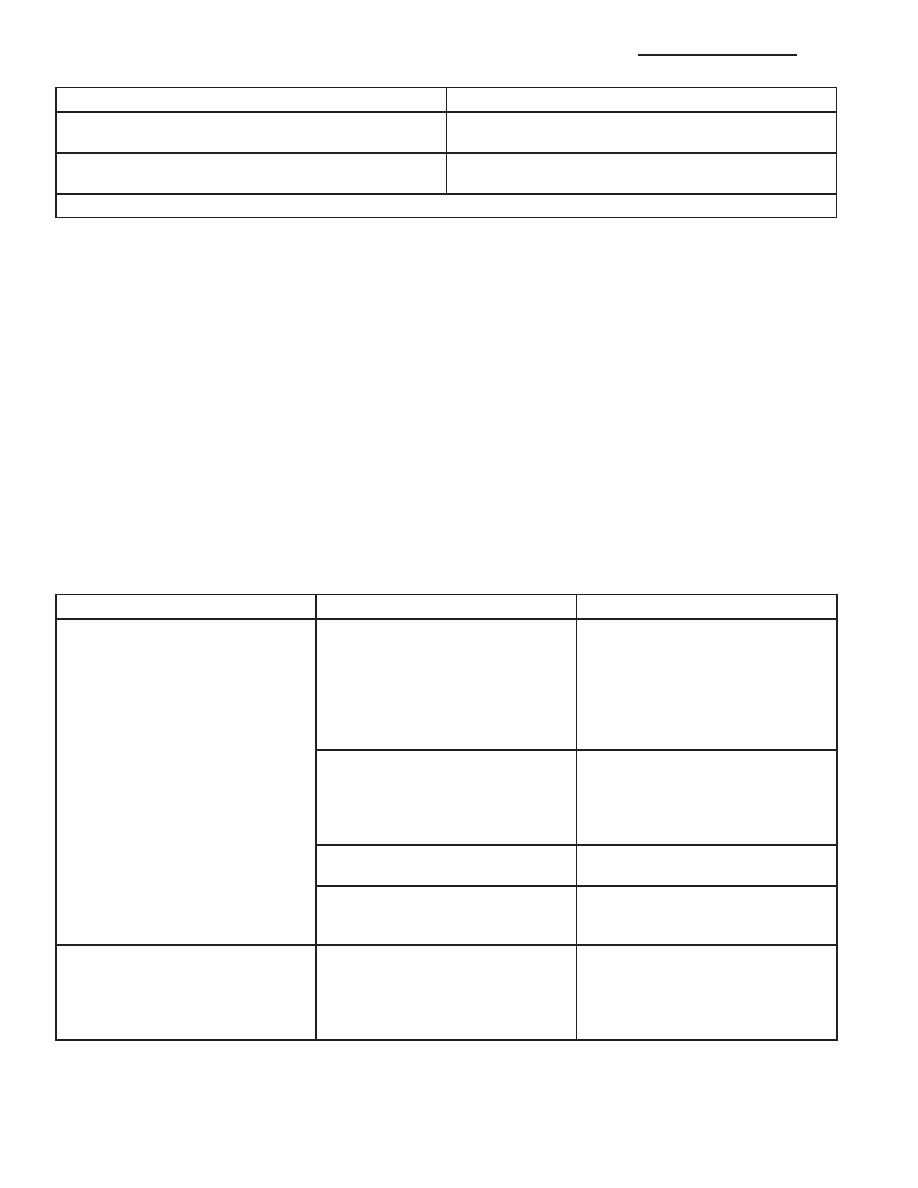Content .. 1389 1390 1391 1392 ..
Jeep Grand Cherokee WK. Manual - part 1391

ACTION
EXPECTED RESPONSE
5. Return shifter to
9
PARK
9
and try to remove the key.
5. Key can be removed (after returning to
9
LOCK
9
position).
6. With the key removed, and the brake depressed, try
to shift out of
9
PARK
9
.
6. Shifter cannot be shifted out of
9
PARK
9
.
NOTE: Any failure to meet these expected responses requires system adjustment or repair.
DIAGNOSIS AND TESTING - BRAKE TRANSMISSION SHIFT INTERLOCK
SYSTEM VERIFICATION
1. Verify that the key can only be removed in the PARK position
2. When the shift lever is in PARK, the ignition key cylinder should rotate freely from ACC to LOCK. When the
shifter is in any other gear or neutral position, the ignition key cylinder should not rotate to the LOCK position.
3. Shifting out of PARK should not be possible when the ignition key cylinder is in the ACC position and the brake
pedal is not depressed.
4. Shifting out of PARK should not be possible while applying normal force on the shift lever and ignition key cyl-
inder is in the ACC, ON, or START positions unless the foot brake pedal is depressed approximately 1/2 inch
(12mm).
5. Shifting out of PARK should not be possible when the ignition key cylinder is in the LOCK position, regardless of
the brake pedal position.
6. Shifting between any gears, NEUTRAL or into PARK may be done without depressing foot brake pedal with
ignition switch in ACC, ON, or START positions.
DIAGNOSTIC CHART
CONDITION
POSSIBLE CAUSE
CORRECTION
KEY WILL NOT ROTATE TO THE
LOCK POSITION.
1. Misadjusted Park Lock cable.
1. Adjust Park Lock cable. (Refer to
21 - TRANSMISSION AND
TRANSFER CASE/AUTOMATIC
TRANSMISSION/BRAKE
TRANSMISSION SHIFT
INTERLOCK SYSTEM -
ADJUSTMENTS)
2. Misadjusted gearshift cable.
2. Adjust gearshift cable. (Refer to
21 - TRANSMISSION AND
TRANSFER CASE/AUTOMATIC
TRANSMISSION/GEAR SHIFT
CABLE - ADJUSTMENTS)
3. Burrs on ignition key.
3. Remove burrs and cycle key
several times to verify operation.
4. Binding or broken components.
4. Inspect system components and
repair/replace components as
necessary.
VEHICLE WILL NOT START
UNLESS SHIFTER IS HELD
FORWARD, OR REARWARD, OF
THE PARK POSITION.
1. Misadjusted gearshift cable.
1. Adjsut gearshift cable. (Refer to
21 - TRANSMISSION AND
TRANSFER CASE/AUTOMATIC
TRANSMISSION/GEAR SHIFT
CABLE - ADJUSTMENTS)
ADJUSTMENTS - BRAKE TRANSMISSION SHIFT INTERLOCK
The park interlock cable is part of the brake/shift lever interlock system. Correct cable adjustment is important to
proper interlock operation. The gear shift and park lock cables must both be correctly adjusted in order to shift out
of PARK.
21 - 374
AUTOMATIC TRANSMISSION - 545RFE - SERVICE INFORMATION
WK